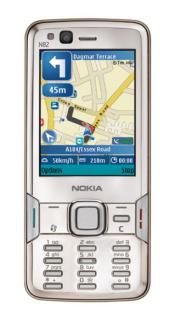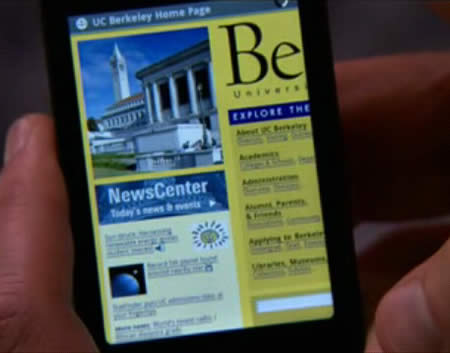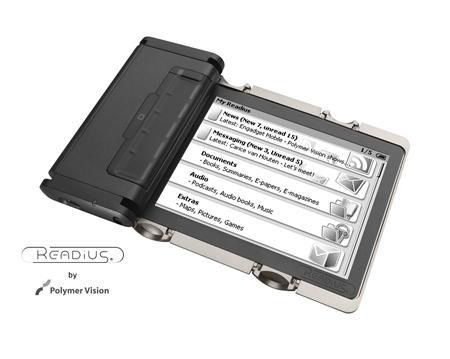New mobile phone technologies for 2008

In our final look at what’s coming in 2008, I’ll attempt to divine the tea-leaves to see what general trends we can expect from our phones.
Camera phone improvements
One key feature in 2007 was the improvement in camera phones, with megapixellage rising to 5 megapixels for the top end phones, and 3 megapixels for the medium range phones. This trend should continue in 2008, with top-end phones reaching 7-8 megapixels and mid-range phones getting a respectable 5 megapixels.
Expect to see improved image stabilization features as well, plus various other innovations taken from digital cameras, all designed to improve picture quality. 2008 really will see phones and cameras converge, with improved flashes, increasing use of auto-focus, reduced lag in taking pictures, and more phones appearing with optical zoom.
More mobile phone trends after the jump…
GPS phones and location-based services

GPS phones will also become more prevalent in 2008. Nokia have already shown their popularity with its N95, and will be releasing a range of new phones that feature Sat-Nav functionality, in addition to three it already offers. In addition, its purchase of mapping company Navteq should also start to bear fruit, resulting in some innovative new location-based services being developed.
Samsung is also expected to be releasing a Sat-Nav phone outside its native South Korean market, while Sony Ericsson has also begun to include GPS within its new mobile phones for 2008.
Finally, the wildcard of the bunch comes from Google’s Android platform, which is designed to include GPS linked tightly with Google Maps. Although there are no firm dates or details regarding phones based on the Android platform, current rumours suggest the first crop will be demonstrated at the 3GSM conference in February. By the end of the year, several Android phones should be released, some of which undoubtedly will have GPS built-in.
Indeed, GPS should be the one key feature that really makes it big in 2008, together with location-based services, all tied into mobile- and location-based advertising. Regardless of what else mobile phones will offer, it’s in the realm of location-based services that the innovation will truly happen.
Mobile Internet

After nearly ten years of promising us the Mobile Internet, 2008 should finally see it arrive in a meaningful way. From the extremely bad days of WAP to the disappointment of 3G, we have new technologies coming on stream that finally make Web browsing on your mobile a reality and not just a gimmick.
HSDPA has already brought mobile data rates into the Mbps range (I currently get 2.6Mbps on my T-Mobile connection in the UK), and this can only increase through 2008. More phones will support HSDPA in 2008, and also Wi-Fi as well, providing broadband data rates direct to your mobile. Better still, WiMAX phones should start to make an appearance, giving us even faster data rates.
These faster data rates have combined with fully functional browsers, such as Apple’s Safari or Opera’s mobile browser, which offer a proper desktop Web experience on your mobile. Add to this improved processing power, bigger memory, and (finally!) a willingness by the mobile operators to open up their networks, providing flat-rate data tariffs rather than charging by the byte, and you have the recipe for explosive growth of mobile Internet devices and services.
Google’s Android platform can only help to accelerate this process, and so by the end of 2008, the mobile Internet will no longer be the painful experience it can be today, or the preserve of people lucky enough to have expensive smartphones.
This in turn will lead to an increase in the number of mobile services and applications that are developed to take advantage of the new mobile Internet devices. If 2007’s Web was the year of the social network and Web 2.0, then 2008 should be the year of the Mobile Web.
Expect a few mobile browsers to start shouting about their support for Ajax and other Web 2.0 technologies.
Interestingly, John Battelle, search blogger extraordinaire, predicts that 2009 will be the year of the mobile Web:
“…by 2009, we’ll finally see a mobile web worthy of a serious development economy, one that looks a lot like Web 2 looked in 2005.”
However, John is commenting on the mobile Web from the US’s perspective, where mobile technology is a least a year behind Europe’s (and about a decade behind that of South Korea’s!) largely because of the dominance of the mobile network operators there that effectively act to stifle innovation. I still predict we’ll see some major innovations in the mobile Web space in 2008 this side of the pond.
Gaming phones

Interestingly, gaming phones seem to be making a bit of a comeback. After the debacle of Nokia’s N-Gage, gaming phones have been extremely quiet the past few years, but now Nokia has released its N-Gage platform as a way of downloading mobile games over the air, and also announced a series of new phones with decent graphics capabilities that can take advantage of the new N-Gage platform.
In addition, Sony Ericsson is rumoured to be working on a gaming phone, although it won’t be branded as the PSP phone.
Perhaps the mobile phone manufacturers have seen the success of the Nintendo DS (which was mostly sold out over Christmas in the UK, despite it having been around for a couple of years), and thought to themselves that the time is now right for mobile gaming.
If there’s a bandwagon to jump on, you can bet the mobile phone manufacturers will be jumping the highest!
Fancy user interfaces
One thing that will definitely feature strongly in 2008 is a series of fancy user interfaces as the mobile phone manufacturers fall over themselves to out-interface the Apple iPhone. Nokia have already shown off a prototype of a glorious-looking user interface that matches the iPhone’s for features, while Sony Ericsson have announced they too are working on a similar interface.
It shouldn’t be long before LG and Samsung also show us what they’ve got, particularly as the pair already have touchscreen phones either on sale or about to be released.
And finally…
And finally, some far out speculations that probably won’t come true, but which could be just around the corner.
Mobile Projector phones
Firstly, a mobile phone with built-in projector that projects its screen onto a wall. Already devices exist that do this, and so all it needs is for the technology to be suitably miniaturized, and we have instant gigantic screen projections from our tiny mobile devices. Whether this technology will be ready by 2008 is doubtful, but don’t count it out.
Foldabale screens

Another technology that’s been hailed as the next big thing is the foldable screen display. Paper-like screens that fold up or scroll out, have been demonstrated by one company or another for the past few years, but nobody seems to have been able to get the technology working reliably enough or at a low enough price for it to be deployed in a mobile phone in the marketplace.
Whichever company manages to achieve this will have a massive hit on their hands, as it promises to provide screen space 5-10 times larger than existing screens, without making the device itself any larger. Truly the holy grail for mobile phones (and certainly for the mobile Internet).
PolymerVision seem destined to be first in this race, announcing recently that a new mobile phone with a 5″ foldable screen will be released in summer 2008.
Fuel-cell powered phones
With all companies falling over themselves to prove how green they are, we might see a mobile phone powered by a water-based fuel cell. Not only are these power packs much greener than existing batteries, they also offer the potential of providing more power for a longer period. You can recharge them more quickly as well – just add water!
Summary
This has been an attempt to peer into the crystal ball and see what’s on the horizon in mobile phone land. Much of this is based on current rumours, and a projection from where we are now to where we will be in a year’s time, based on the technologies the phone companies have demonstrated are feasible.
As such, we can expect the majority of these trends to come true in one fashion or another – their success just depends on whether there’s a demand for them or not. Personally, I really hope the foldable screens make it big this year, as if Polymer Vision can get the technology right, it has the potential to radically alter the abilities of our phones, and really disrupt the marketplace far more than Apple’s iPhone did.
As for technologies that a re a dead-cert, put your money on GPS phones – nearly all phones from the mid-range up will come with GPS by the end of the year.
Whatever transpires, though, we seem set for a thrilling year of new technologies. You can count on MobileMentalism to bring you the best news, latest rumours, and even a review or two, as the year unfolds.
Hmmm, maybe you should subscribe to our newsfeed?!







